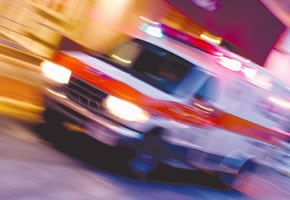When paramedic Rick Sasseville was asked how many times in his career he responded to a call and found a citizen performing CPR on the victim, he didn't have to think long before answering.
"Two," he said. That's twice in 15 years.
Just five per cent of people who go into a cardiac arrest have a full recovery, said Sasseville, spokesperson for the Greater Sudbury Paramedic Association. "We want to get that number up."
The number would go up if people would "not just take the training, but actually do it," he said.
Some people learn CPR but are too shy to do it, he explained, because they're afraid they'll do it wrong or fear they'll kill the person.
"You just have to get over that," he said. "Once you do the first compression, the fear is gone."
CPR stands for cardiopulmonary resuscitation and is defined by the Heart and Stroke Foundation as an emergency procedure involving pressing down on the chest and rescue breathing. CPR has the power to restore blood flow to someone suffering cardiac arrest, keeping them alive until an ambulance arrives.
In March 2008, the Heart and Stroke Foundation joined the American Heart Association in endorsing hands-only CPR, a way of doing CPR that doesn't include mouth-to-mouth breathing. It can be used by people not trained in conventional CPR or unsure of their ability to do it. The foundation stressed, however, that hands-only CPR should not be used on infants or children, for adults whose cardiac arrest is from respiratory causes (like drug overdose or near-drowning), or for an unwitnessed cardiac arrest.
CPR can be learned in one day, Sasseville said. Instructors teach students with the help of videos, mannequins and hands-on exercises.
"It's a lot of fun," he said. "You leave there looking for a cardiac arrest."
To find out where you can learn CPR, look up First Aid Services in the yellow pages.
